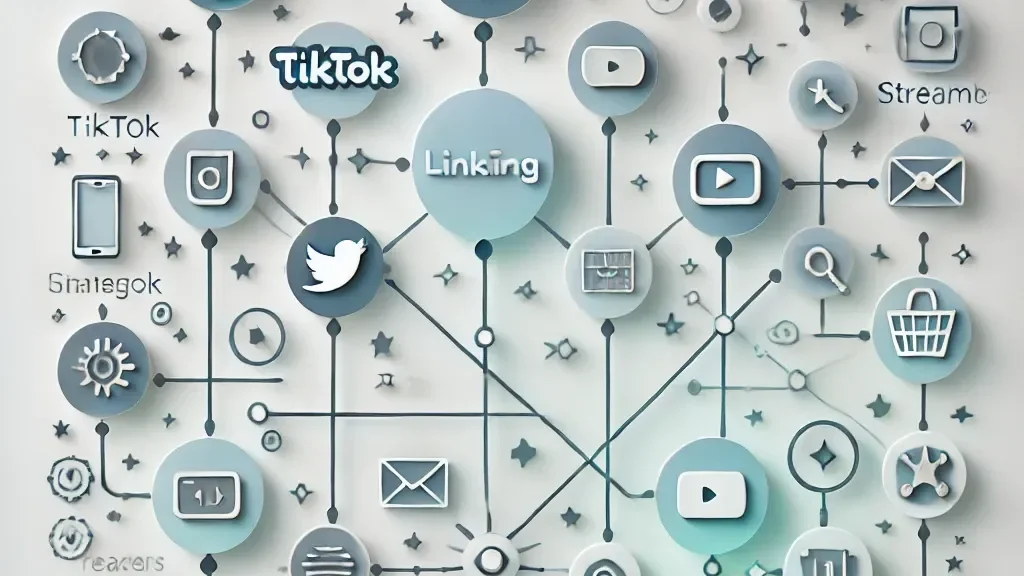Nielsen released its 2023 Annual Marketing Report, and it offers tremendous insight into where many marketing teams’ heads are today. This article will break down the Nielsen report and discuss its implications in the coming year.
2023 Key Takeaways: Business and Marketing Trends
As we can all sense, the upcoming year feels riddled with economic uncertainty around the globe. While that may be true in many respects, most marketing teams do not expect budget cuts in the coming year. In fact, many expect small budget increases. This leaves room for experimentation and expansion into new domains like live content – a space many of these teams hope to further explore in 2024.
Marketing teams preparing for 2024 indicated attention to key themes which include:
- Attribution difficulties. Marketers report that attribution feels harder and less accurate than it once did.
- Darkness across the funnel. It’s hard to create a direct link between efforts and converted leads because much of the strategy feels like it’s in the dark.
- ROI. Not feeling confident that they know what truly works holds a lot of marketers back/struggling to justify experimentation. A lack of attribution transparency means that ROI is hard to prove across digital channels.
- An interest in streaming. The report notes that it’s becoming clear that streaming is how people prefer to consume content, but most marketers cite being unsure of how to avoid the attribution problems with this new channel. Despite this, streaming is the most popular next move for marketing teams.
These key takeaways seem to be different angles of the same problem. Despite most marketers anticipating an increase in their budget (however modest), nearly 70% of marketers acknowledge that the economy at large has a measurable impact on their campaign and effort planning for the year. This means that it’s going to be harder to justify holding on to marketing efforts or experimenting with new ones without easy attribution as the economy worsens.
Applying the Nielsen Report: How Marketers Can Live Stream with Confidence
Let’s troubleshoot those key takeaways. In 2024, marketers want to build streaming into their strategies. But it’s clear that the only way this is a sustainable (or viable) tactic as the economy stumbles is if it can create a clear ROI. Because it’s a relatively new tactic, confidence in streaming’s direct return is low, but hope for the effort is high.
The good news for ambitious teams looking to add streaming power to their marketing tech stack is that there’s a way to accomplish both. With Livery powering your live streaming initiatives, you create a marketing and branding channel with direct attributable returns. It has never been easier or more fun to generate revenue through marketing.
Let’s talk about it.
The Benefits of Livestreaming for Marketing Teams
You already have an abundance of outreach tools at your disposal. So what are the benefits of live broadcasting and streaming to your audiences? While it’s easy to assume this is just another tool, the data suggests otherwise.
Here’s what it says:
- It’s preferred. 80%+ of your social audiences prefer live video content to blog content and traditional social media posts. There are a lot of reasons for this, but in part, it feels more personal, contributes to a feeling of FOMO, and creates positive and memorable brand experiences. (Source)
- Live video is incredibly engaging. Because live streaming gives a sense that you’ll miss out if you turn away, it grabs and holds viewer attention longer. This makes it a much better tool for conversion.
- It works. Livestream video boasts conversion rates of up to 30%. (Source)
And that’s all for live streaming alone – imagine what would happen with a tool designed to trigger and capture engagement throughout the livestream so you could really see and lean into what’s working…
Adding Live Engagement to a Livestream
Thankfully, you don’t have to imagine it. Thanks to tools like Livery, you can affordably stream with added live engagement opportunities, such as polls, shopping, trivia, and more. With an interface as easy as drag and drop, you can add these tools to your live streams in advance, and adjust or add more in real time.
Each engagement touchpoint creates actionable data at both the individual and group levels that can be used to optimize your content in real time (i.e., live on air), better target audiences in the future, and create a directly attributable channel for revenue.
Video Live Streaming for Marketing
Most marketers today are familiar with live streaming and have at least considered trying a live event. Most often, however, this streaming experimentation happens on social platforms like Instagram, TikTok, YouTube, or Facebook. While there are obvious pros to using these platforms like the fact that your existing audience may already be there, there are also serious drawbacks for both attribution and audience analytics.
As most marketers know, social platforms collect a lot more data than they distribute. They also own your audience, meaning they can lock you out or shut your account down without warning, leaving you without access to the audience you’ve worked so hard to build. For this reason, experts recommend building a marketing channel that you retain direct ownership over.
Therefore, it only makes sense that the best way to introduce video live streaming for marketing teams is to build out your strategy on a platform you retain full ownership over. That way you can keep all generated data and retain permanent access to your audience. Livery was built with these principles in mind, making it the perfect partner for building out this new channel for your business.
How Streaming Converts
Next, let’s talk about why a partner like Livery can help you create a clear attribution strategy for your marketing efforts moving forward.
Interactive live streams, meaning live streams with engagement opportunities like polls, trivia, and more, generate a ton of data. Each answer to a question, tap, link click, and view can teach you something about your audience. But with most streaming platforms, you don’t get access to that data. And if you do, it’s incomplete, not available for long post-stream, or not downloadable for analysis at the group and individual levels.
Additionally, each stream is just one touchpoint out of the many it often takes to eventually convert a customer. So how can you validate your efforts with a clear attribution strategy?
The first thing to know is that streaming generates direct results, with a 15% average conversion rate (10X the average website conversion rate alone) according to PRWire. By this, we mean that you can go from the first interaction with a prospective customer to a full-blown revenue-generating customer over the course of a single stream.
How to Create a Clearer Attribution Strategy
But even if an individual doesn’t make it all the way to the purchase stage from the first stream, how can you attribute future conversions back to your streaming efforts?
Here are ways to build a better attribution strategy:
- Ask them how they found you. The best way to understand which efforts are working is to ask your customers directly. When they sign up for an email list, for example, ask them how they found you. Not with a dropdown menu with prefilled options – give them a blank space to write out their own answer. You’ll learn a lot about what’s working by simply asking.
- Create customer profiles. With Livery, you can require customer profiles to join a stream. This means that each and every piece of generated data gets logged in their individual profiles. You’ll not only know enough to better target them in the future, but also how long/how many touchpoints it took to convert them. This gives you the data you need to optimize.
- Understand the darkness. Finally, it’s important to understand that a lot of the data “black holes” are by design. Whether it’s Google tag problems, customers preventing their browser from reporting referral data, or social media platforms blocking data transfer, there are a lot of “Direct Search” analytic results from non-direct search sources. That’s why finding alternative attribution techniques and compiling data sources is the best course of action for as clear of a picture as possible.
How to Create a Direct ROI with Streaming
As we touched on, interactive live streaming (like a live shopping show) creates direct ROI at a rate almost 10X higher than the average website conversion rate. These numbers alone should be convincing enough to give it a try, but if you still feel unsure about the process, how/why it works, or how to duplicate it in your live environment, download our blueprint free (and no email address required!). In it, we’ll show you exactly what it takes to create a livestreamed event that works on any (or all) of your desired KPIs.
DOWNLOAD THE BLUEPRINT

